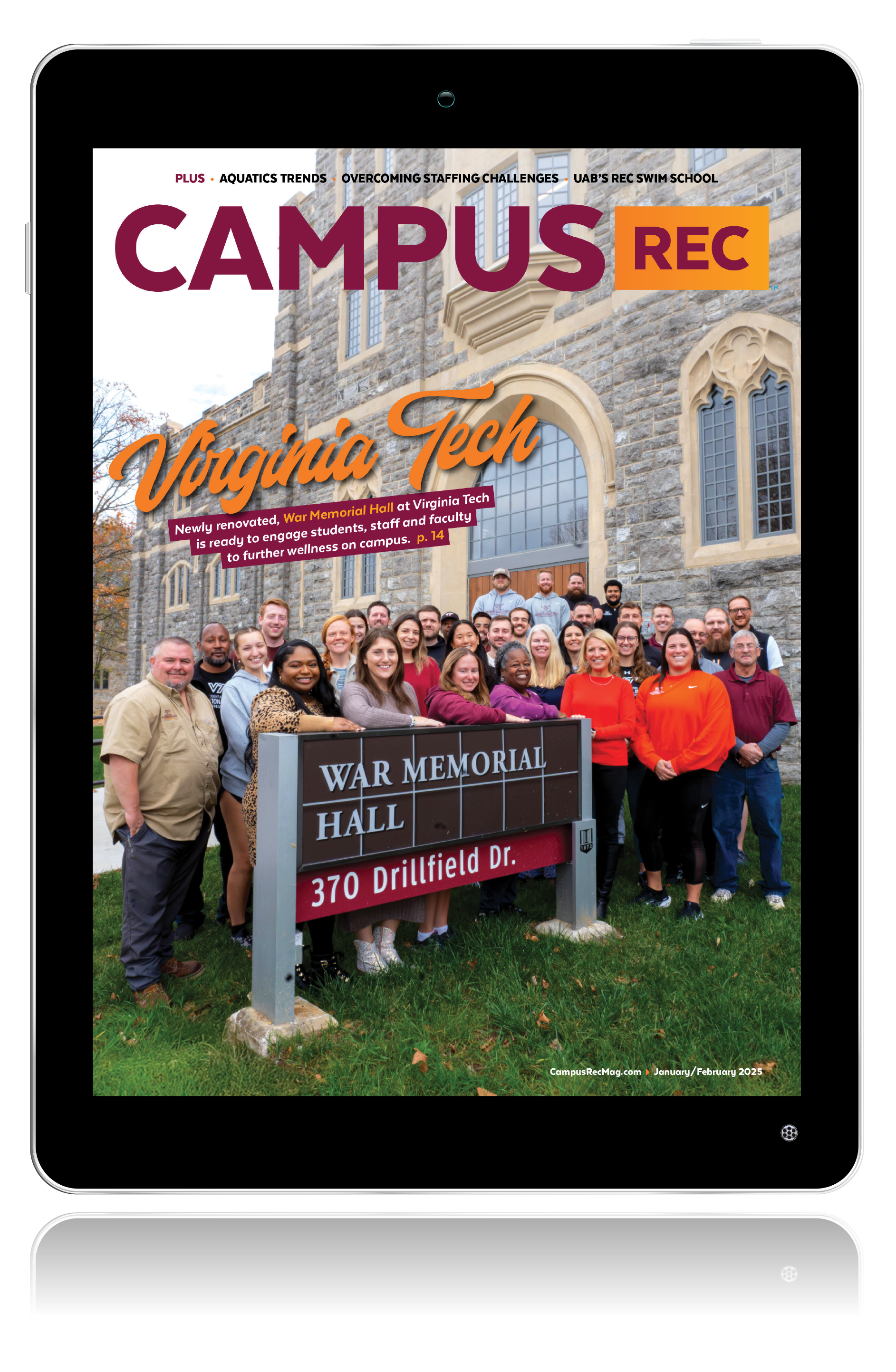Intramural and club sports have been an integral offering at college and university recreation centers for over 100 years. But over the past century, the industry has changed considerably. Now unique sports such as quidditch, broom ball and canoe battleship are becoming staples to any intramural and club sport offering.
While these new additions provide increased opportunity for students, it can result in higher operational costs. It is difficult to know when a piece of equipment will break and need replacing. This is precisely what Tom Soria, the assistant director of intramural sports at the University of Miami, experienced this year when a backstop unexpectedly broke during a baseball game.
To order a new backstop and have it shipped to the university cost Soria approximately $2,000, which was an expense he was not expecting to pay that year. “I had to find a way in my budget to make
it happen because we needed a backstop,” said Soria.
The price of running an intramural or club sport program varies greatly, depending on what sports you offer. According to Amy Rask, the student program manager in the division of athletics and recreation at the University of Denver, the cost of operating the university’s 28 club sports are much higher than running the intramural program. In addition she must account for travel costs such as plane tickets and renting vehicles, then equipment and the occasional venue cost for sports like hockey.
This is where communication comes in. Rask meets with all club sport captains biweekly to ensure they are aware of their budgets, then has quarterly meetings with each captain individually.
“I work individually with each club,” explained Rask. “Knowing what money they have coming in, the allocations that they received and, also taking a look at the previous years expenses and being able to guess, based on their schedule, how many trips they will have to go out of town for and what the hotel costs typically are in that town.”
Rask is prepared for the worst. In case any club spends more than the allocated budget, she has a non-advertised emergency budget clubs can dip into if needed so students don’t have to dip into their personal pockets.
However, even if you allocate an emergency fund, expensive surprises can still occur. When accounting for the upcoming year, Brian Bock, the assistant director of intramurals, recreation and sport clubs at the University of Chicago, looks to costs from the previous semesters. This strategy helps him determine expenses for the future.
Bock takes his planning a step further by contacting intramural representatives that live in student housing. The representatives are student captains or leaders on intramural sport teams, strategically placed in dorms to get more students involved in intramural and club sports. Working with these representatives gives Bock insight into approximately how many students will be participating, which helps him budget.
“I kind of have a good idea going into the school year of what I’m looking at, based off history, word of mouth and our registration period,” explained Bock. “Well before our sports actually start, in most cases, I have some time to make adjustments if need be. It is all about being proactive, looking at the past and also looking at some predictors for current and future participation.”
Another way to both save money and help the environment is to cut down on paper use. Connie Nickel, the assistant director of club sports at the University of Miami (UM), said technology has not only helped the green initiative at UM, but also saves money on paper and time spent organizing paperwork.
“Typically, on one night, you are going to have five or six pieces of paper filled out. That is just for one sport,” said Soria. “If you have three sports going on together, you could potentially have 18 pieces of paperwork, and you have to go through all of that. Now you’re saving the university money. Our intramural program has eight or nine iPads that we use.”
Ultimately, if you are having trouble managing your budget, the network of campus recreation professionals can be your biggest resource. “We have NIRSA and some governing bodies,” said Bock. “We are all kind of fighting the good fight, so to speak. But one thing we don’t do is pick up the phone and say, ‘Hey, I have this problem.’ A lot of times, you don’t have to re-create the wheel.”
More than once, Bock said he has dealt with a problem that he could have deciphered differently if he had asked how another director solved the same problem, even across varying division colleges.











